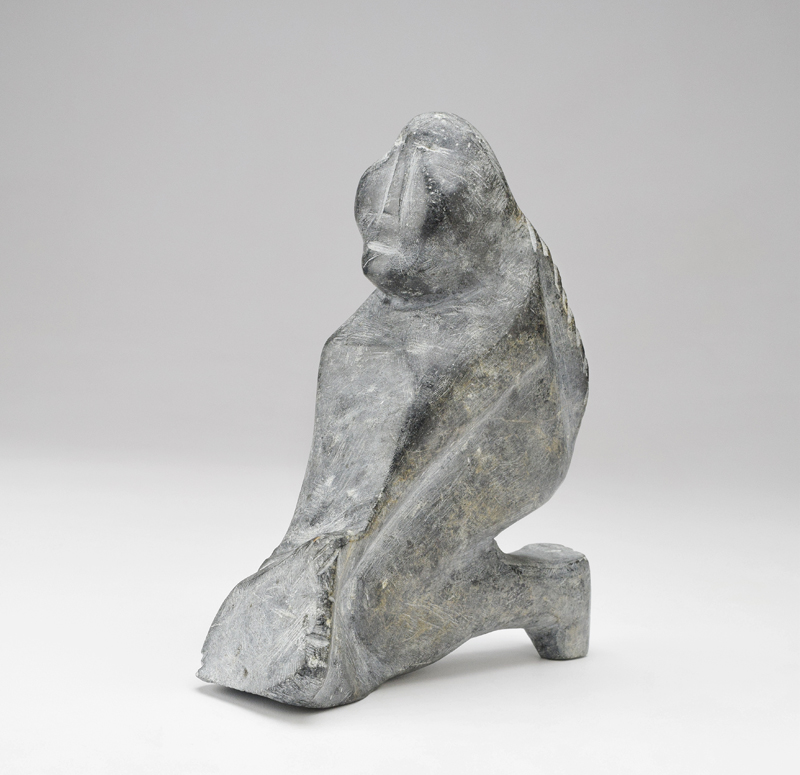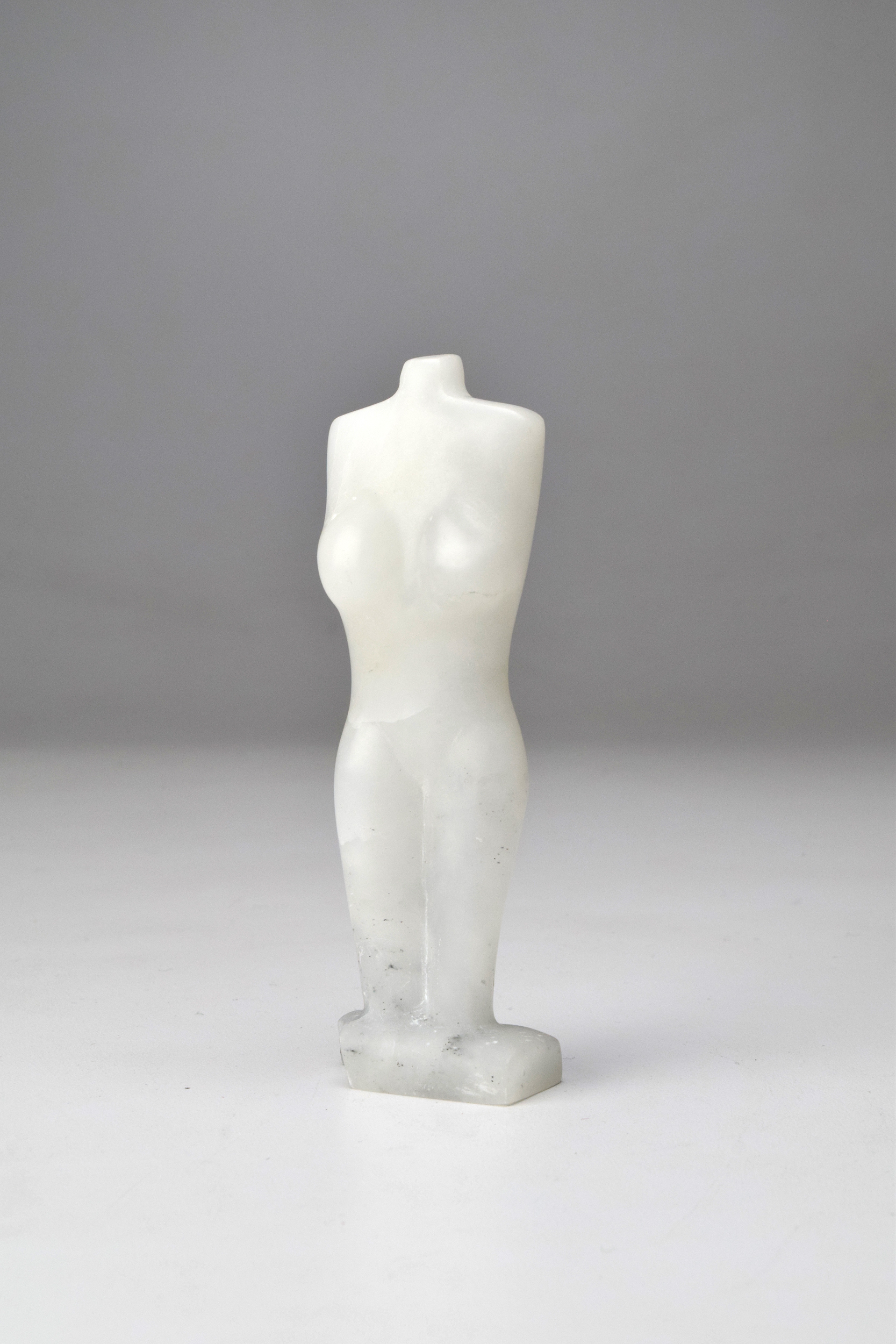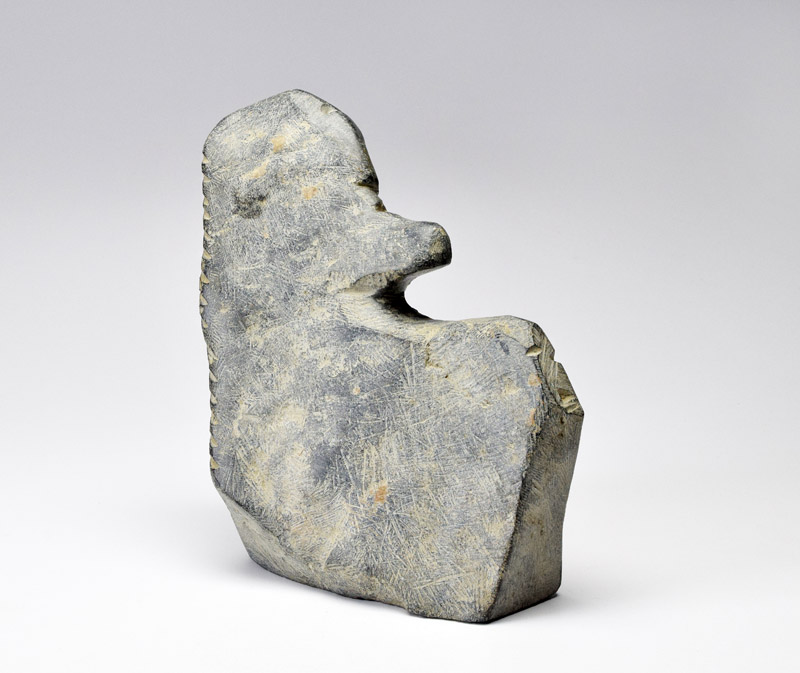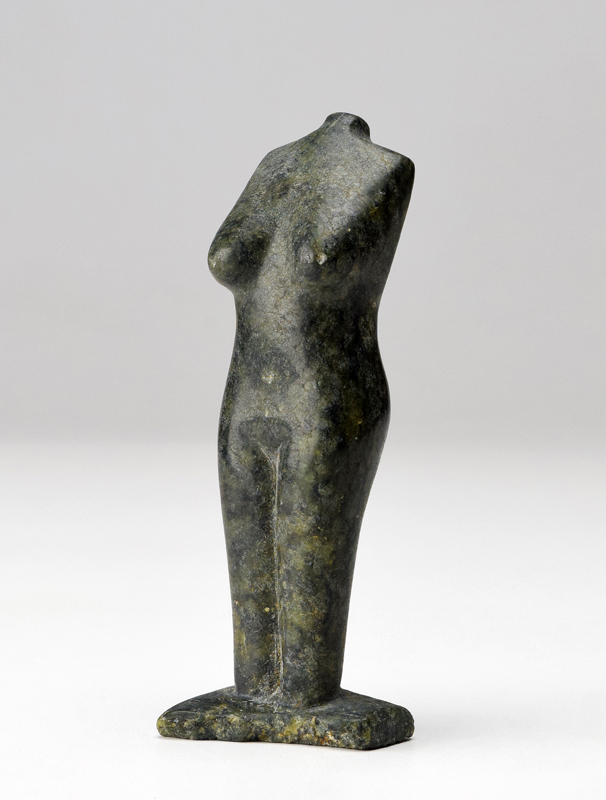Profile: Two Women Sculptors
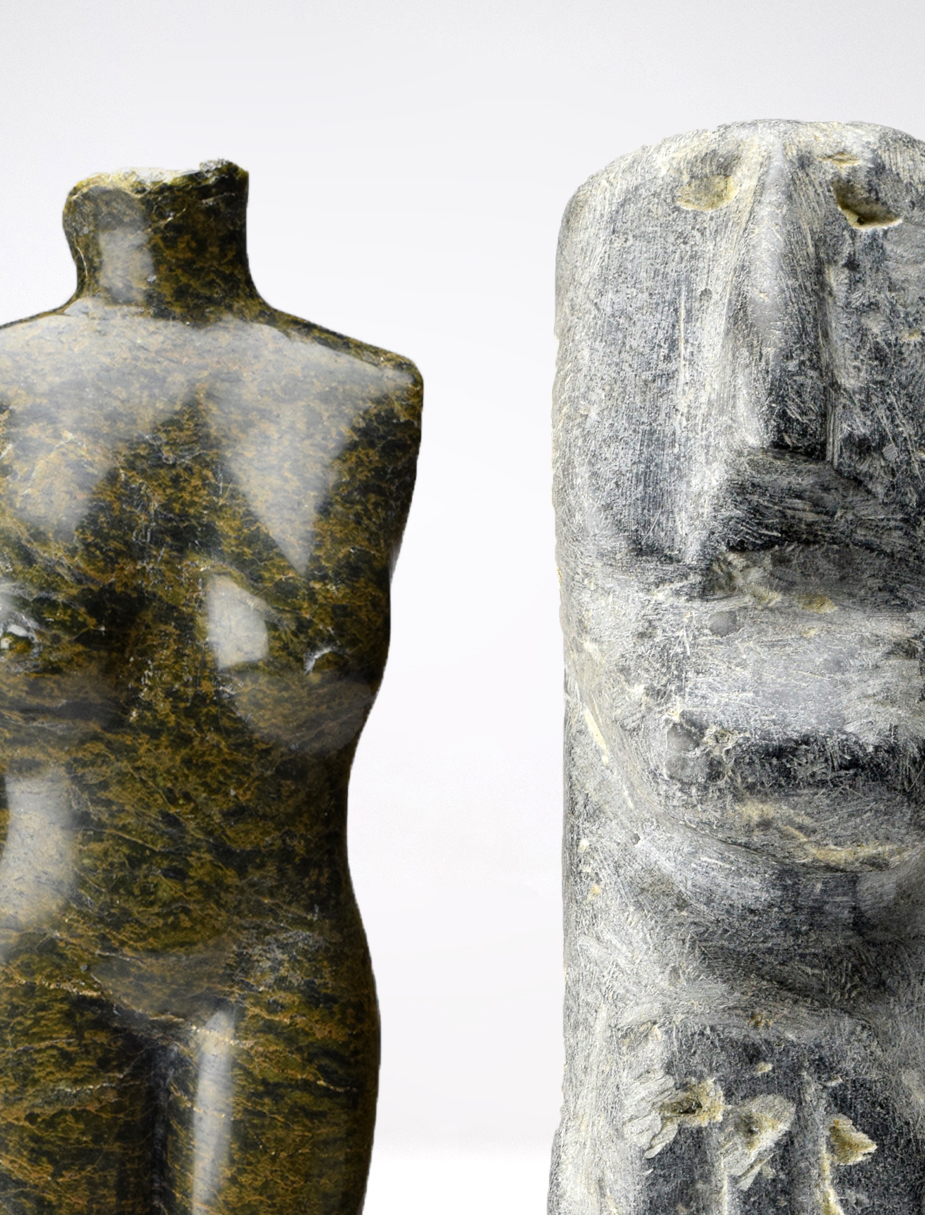
In step with our series of exhibitions devoted to women artists, our February profile brings together works in stone by two of Inuit art’s best-known sculptors: Arviat’s Elizabeth Nutaraaluk Aulatjut (1914-1999) and Kinngnait’s Oviloo Tunnillie (1949-2014). Although they represent different generations and belong to different regional expressive traditions, both artists were pioneers of their respective times, helping to establish a place for women artists in the historically male-dominated medium of stone sculpture.
Born in 1914, Elizabeth Nutaraaluk Aulatjut started making sculptures in the mid 1960s, just as her family was in the process of relocating from their inland territories to the new coastal settlement of Arviat. Nutaraaluk’s first sculptures portrayed a range of subjects, including animals, birds and people. In the mid-1970s, she turned her attention almost exclusively to portraits of women, picturing them either singly or, more frequently, with children. The three examples featured here exemplify her singular figural approach. Rendered in the region’s distinctive grey stone, two of the three works are mother and child images. In both cases, the women’s features have been chiseled from the hard stone, while their bodies are almost inseparable from the minimally worked material out of which they emerge. The third sculpture in the series is less monolithic and more refined. All three portraits are notable for the artist’s trademark cross hatching denoting long braids falling down the backs of the figures.
